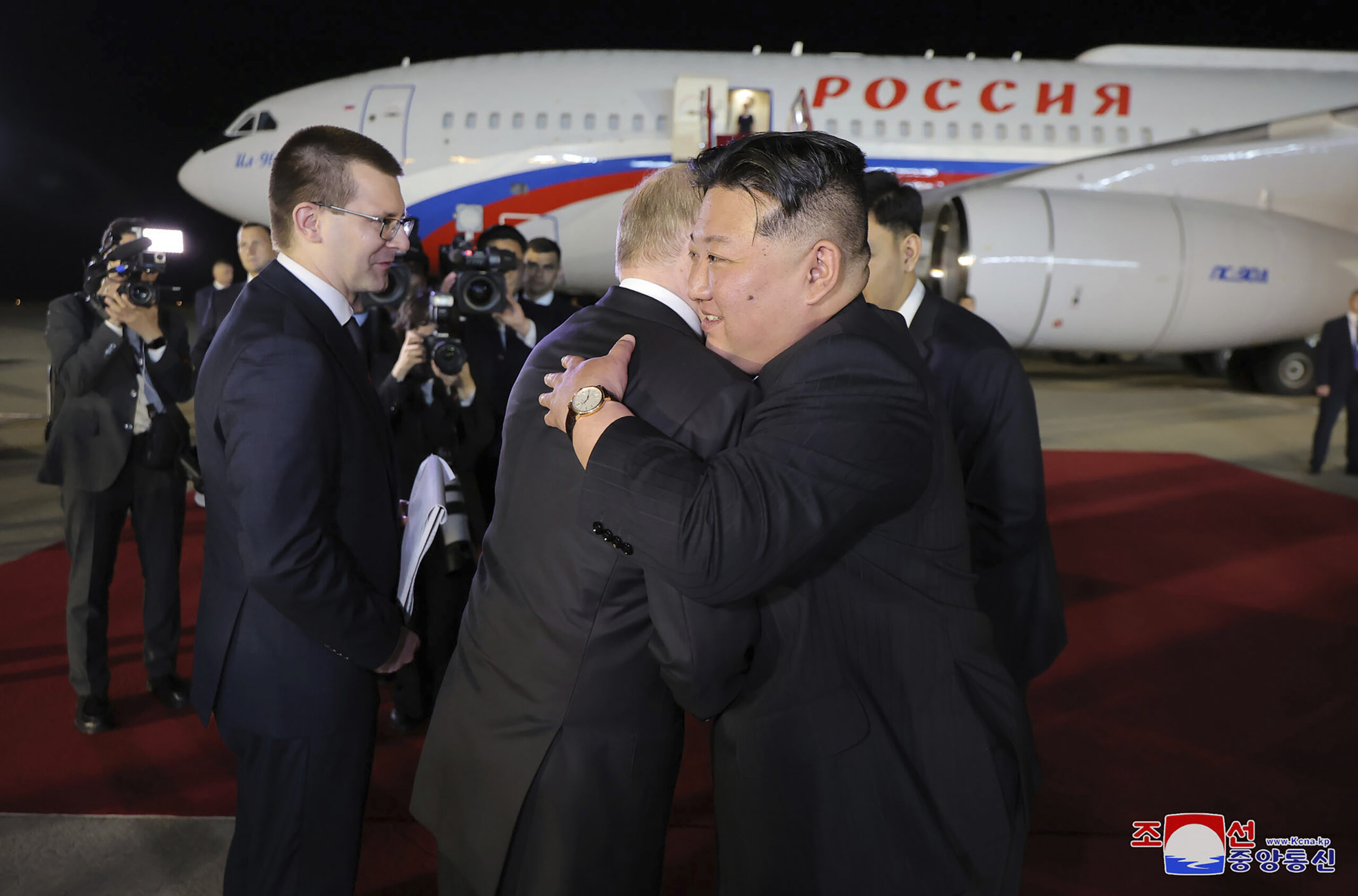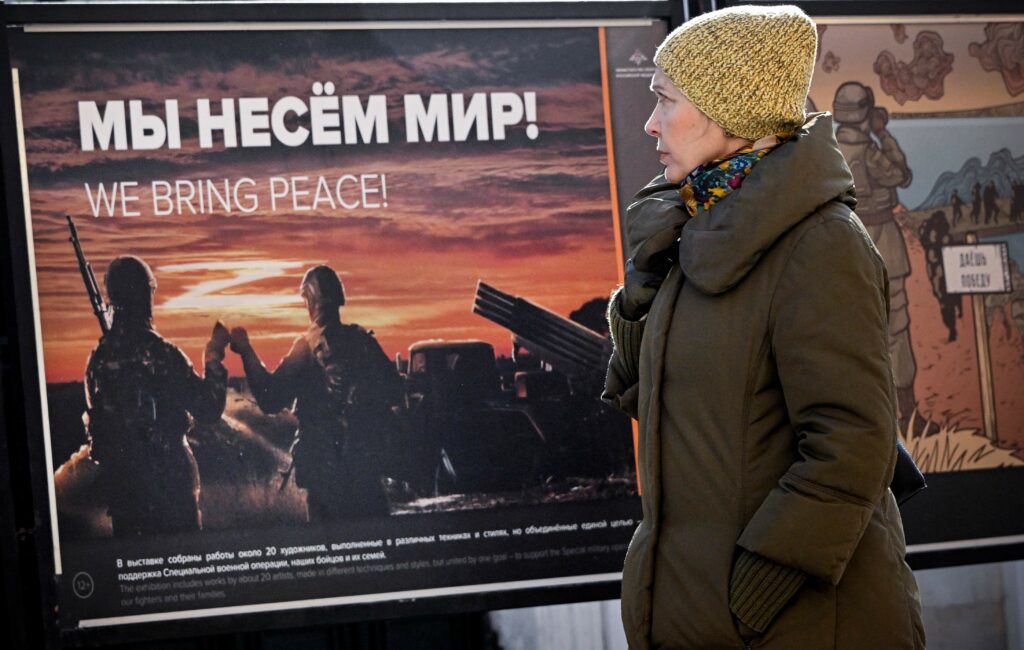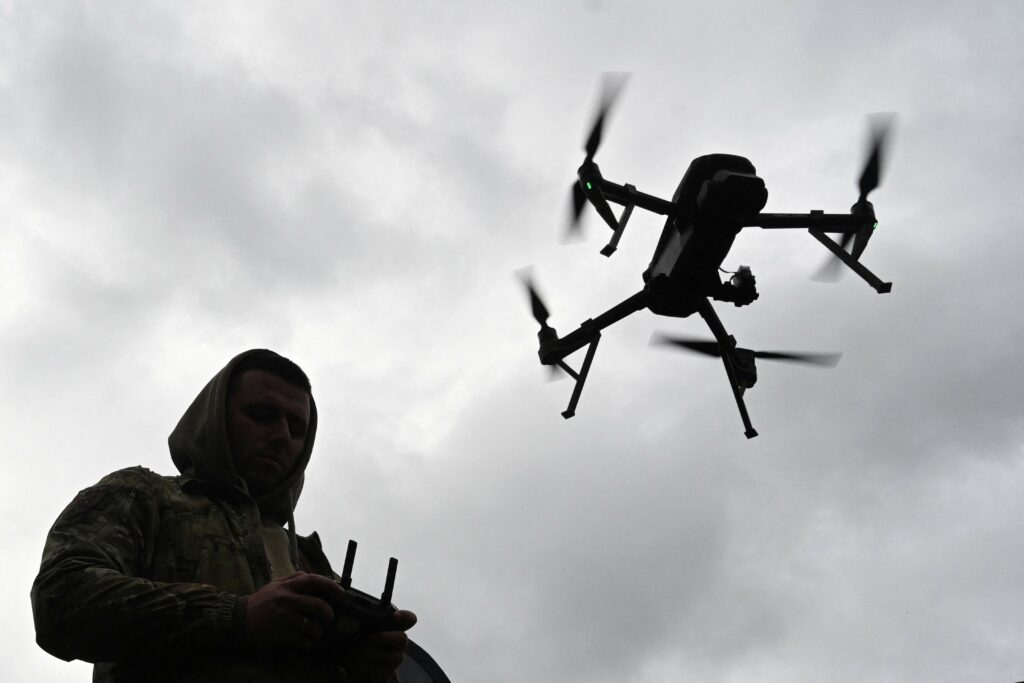Russia’s only true allies might be its army and navy—but it does have partners on the international stage. The alleged introduction of North Korean troops to join the fight in Ukraine is the result of the partnerships Russia has built up to combat the array of economic controls against it and meet its own warfighting deficiencies. Rather than constituting an organized «axis», a loaded term in its own right, Russia’s deepening military cooperation with Iran and North Korea is not a tripartite alliance, but an interlocking series of partnerships and knowledge sharing.
In fact, the partnerships Russia is engaging in here are the result of decades of previous collaboration in the realm of arms sales that is deeply technical and difficult to put in a clear narrative focused on events after 2022. What has changed now is that Russia, recognizing its gaps, has turned to importing rather than exporting weapons. And rather than abiding by multilateral sanctions, Russia is now using its place in the international system to flaunt them with abandon.
Likewise, Russia under sanctions has been forced to adapt and learn from North Korea and Iran. Both North Korea and Iran have pioneered several tactics in avoiding sanctions. A detailed look at Russia’s tactics in avoiding sanctions shows an evolution of ideas and tactics first used by North Korea and Iran to avoid restrictions imposed by the United Nations and United States. Russia, with its larger mass and resources, has been able to use these same tactics on a larger scale. This informal learning is arguably just as important over the long term as any military partnerships.
Little North Korea and Big North Korea
Russia’s deepest partnership, the one close enough to be called a formal military alliance, is the one with the ruling Kim regime. The partnership between the two countries came into its own in 2024. The provision of munitions, both artillery and rockets marked the first visible step of what would become an increasingly vital relationship for Russia amidst its international isolation. This was followed by the provision of artillery shells, Hwasong 11 family (also known as the KN23/24) short-range ballistic missiles and, potentially, the provision of advisors to oversee and assist with their usage on the battlefield, as well as ground troops.
This is the first time Russia has cooperated with North Korea in a meaningful way. The Soviet Union was a major patron, supplying tanks, armored fighting vehicles, anti-aircraft weapons and aircraft in the thousands to North Korea throughout the 1980s. This supply dried up with the collapse of the Union and North Korea’s increasing global isolation, partially due to the country’s nuclear program, put a long pause on the bilateral relationship until the current moment.
This new phase in Russian-North Korean collaboration unfolded against the backdrop of Western sanctions and diplomatic pressure, which had pushed both nations to the margins of the global community. For Russia, facing ammunition shortages due to the high costs of its ongoing war, North Korean military support offered immediate tactical relief. North Korea, in turn, seized the opportunity to solidify its standing with a major power and secure political and economic concessions, such as advanced Russian military technology or energy supplies. The symbiotic nature of this relationship highlights both countries’ pragmatic partnership.
The impact of this collaboration became evident early in 2024. In January, North Korean missiles freshly manufactured just in 2023 were identified in Ukraine. This direct involvement of North Korean arms in a European conflict marked a significant escalation in amount of diplomatic risk both Russia and North Korea were willing to take on. For North Korea, this cooperation not only provided economic and political leverage but also showcased its weapons industry on a global stage.
North Korea has gained immensely from this partnership. In March 2024, the UN Security Council, stopped the activities of the long-standing expert committee responsible for monitoring evasion of UN sanctions. These UN reports, published consistently, monitored and identified the people and networks responsible for sanctions busting efforts. As the only independent agency with the funding and authority to monitor cross-border activities, the shutdown of the Panel was a major boon to North Korea’s global smuggling networks.
Any agreements on technology transfer from Russia to North Korea, which would now be free of UN monitoring as of Spring 2024, would greatly benefit North Korea. North Korean engineers have been able to develop and advanced weapons program featuring both nuclear weapons and the complex missile systems required to launch them across oceans over decades. North Korea has been able to do this through ingenuity of their own engineers and very successful reverse engineering of various Soviet legacy weapons. Knowledge transfer in the form of new approaches to aerospace designs and guidance systems from Russia could fill gaps in North Korea’s own weapons systems deficiencies in a way that before required ad hoc reverse engineering of smuggled weapons systems and components through a tight blockade.
The relationship escalated when the two sides signed a mutual defense pact June 19th, 2024. This prefaces the possibility of actual armed assistance. That armed assistance may be what we are seeing now. This unprecedented agreement signaled a deeper alignment, suggesting that North Korea’s military support might extend beyond arms supplies to direct military assistance in conflicts where Russian interests are at stake. The pact not only increased the possibility of North Korean troops or advisors becoming directly involved but also underscored the bilateral nature of Russia’s partnerships.
Persian Pathway
Russia’s military partnership with Iran has been more consistent since the Soviet collapse. The military dimension of the relationship can go back to at least 1986, when the Soviet Union, in its final days authorized the sale of various armored vehicles such as armored fighting vehicles, various artillery and anti-aircraft platforms. It was only in the late 1990s that Russia began supplying Iran with more sophisticated weapons systems, namely Soviet legacy aircraft and submarines. In the 2000s, Russia continued selling generally more advanced weapons systems to Iran. Namely, various radars and air defense platforms. The sanctions against Iran as a result of the country’s nuclear program, which Russia supported, also curtailed this.
Resolution 1929 specifically, imposed an arms embargo on Iran covering many of the weapons Russia had up to that point been supplying. The removal of UN sanctions against Iran in 2015, lifted the aforementioned arms embargo and allowed Russia more freedom of action to making new military sales to Iran again. Russia was finally able to supply Iran with the S-300 system bought in 2007 for over $ 800 million only in 2016 after the UN arms embargo was lifted. This successful transfer allowed for a new round of talks on other weapons systems to begin.
In some ways, the partnership that emerged after the start of the Russo-Ukrainian war is an extension of the earlier transactional relationship between the Russian defense industry and Iran. Russia still is signing contracts with Iran to provide aircraft and air defense platforms, albeit significantly more advanced ones. Where the partnership in military sales has changed is that Russia is now procuring from Iran, rather than the other way around.
Russia has made the Shahed series of one-way attack drones a centerpiece of the strike campaign against Ukraine. Russia’s military industry had focused on the development of reconnaissance drones such as the Orlan-10 and other similar platforms. It simply had not developed something like the Shahed which functions in practice more like a cheap and disposable cruise missile. It took a scramble by Russia in mid-2022 to realize this and begin the current line of cooperation.
While the full nature of the current production line is unclear, Russia is now successfully mass producing its own version of the Shahed called the Geran based off of the Iranian model, but Russian in manufacture.
In determining whether the relationship between the three countries is deepening, one feature for academics and researchers focused on Russia is to watch how pre-existing relations between North Korea and Iran change. North Korea and Iran have cooperated for decades on technology for specific missile subsystems. The arms control community has watched this relationship for decades, with the military cooperation between the two countries occurring alongside diplomatic outreach. Whether these interchanges involve Russia going forward will determine how robust the relationships between the three countries can be characterized.
Learning (Sanctions Evasion) from the Experts
Russia has been very successful learning sanctions evasion tactics pioneered primarily by North Korea, and to a lesser extent Iran. Russia, North Korea, and Iran are each under different kinds of sanctions pressure from the West. Russia is under an ever-expanding «smart sanctions» regime from the US and EU, Iran is under targeted sanctions primarily led by the United States, and North Korea is under what is closest to a traditional embargo through comprehensive UN sanctions. Despite the differences in the scope of sanctions each of these three states, the tactics, and even sometimes networks overlap.
Russia, given its role as a global arms exporter, has a suite of ships used to physically transport arms abroad to customers around the world, such as India, South Africa and other places. Many of these vessels were put under sanctions by the United States in May 2022. However, in contrast to the UN sanctions which were imposed on Iran, and the UN sanctions imposed on North Korea the US used its own claims at extra-territorial authority to sanction the vessels. As such, there is nothing in international law stopping countries from accepting the vessels in their ports as there would be if the sanctions were imposed by the UN.
Russia has used this loophole, the lack of UN sanctions, to continue transporting items to third countries these vessels. This fact led to a diplomatic incident between the United States and South Africa in 2023. South Korea accused the same vessel, the Lady R, of being involved with arms transfers with North Korea in 2024.
Russian vessels used to be relatively easier for researchers to track, as they transmitted something called AIS, a signal transmitted by ocean going vessels to communicate their position. This is used to prevent boats from accidently crashing into one another at sea. After the imposition of the sanctions, Russian vessels began copying a tactic pioneered by North Korean vessels, turning these safety transponders completely off. One only has to look at the publicly available safety transponder data for the vessels South Korea accused Russia of using to help North Korea transport weapons — they disappeared off of Vladivostok months ago — whereas before the vessels would transmit their location. Unsurprisingly, this was one of the means the UN used to monitor sanctions violations to North Korea, before that project was shut down.
These sanctions-busting tactics at sea are not isolated to the waters off of North Korea, but also take place in the Caspian Sea. Ships under MG Flot, the former Transmorflot, a sanctioned shipping company that is the legal manager of the aforementioned Lady R according to freely available public records, has been accused of being involved in Russia’s arms trade. Public records also show MG Flot’s managed vessels also include the Port Olya 3, who travel without safety transponders in the Caspian and have been accused of shipping weapons to Russia from Iran. Why Russia continues to use these tactics in the Caspian where there is little Western states can do to stop port calls to Iran is a mystery.
Beyond copying tactics from North Korea in the Caspian Sea and off the coast of Vladivostok, Russia also uses some of the same networks as Iran to get around sanctions on energy products such as oil. The picture on this is murkier, as there are a greater number of different actors involved in avoiding sanctions on oil, but in May 2022, a vessel owned by Transmorflot, the same network involved in the above alleged arms transfers, had a vessel impounded off of Greece, flying the Iranian flag and allegedly transporting of Iranian oil under sanction. Iran responded to the seizure with its own retaliatory seizure of Greek oil tankers.
Russia has likewise learned and built upon North Korean and Iranian work pioneering the use of front companies across Asia. Throughout the 2000s and 2010s, Iranian defense officials have been able to skillfully avoid prohibitions on dual-use weapons technology through the use of extensive front company networks in mainland China. North Korea has used the same approach of using networks of front companies, sometimes inside mainland China, to procure items for its missile program according to the UN. While it is illegal to sell controlled dual-use items to Iran and North Korea, many of these items are not banned for export to China. As such, the Iranian military was, over the span of a decade, acquire huge amounts of goods used in weapons systems by lying and claiming the goods were only going to China. Hong Kong, where setting up a business is very easy given the city’s role as a global trade hub, made it a useful place for Iranian actors to set up shell companies for their oil sanctions-busting networks.
Russia has taken this model of sanctions evasion and exploded it in scope. The lack of UN sanctions on Russia and Iran means that from the point-of-view of Chinese officials, this is legal trade in commercial goods. Russian businessmen operating from Hong Kong have served as a frontline in the continued resilience of Russia to targeted sanctions on dual use goods. Verstka and Vazhnie Istorii has extensive reporting on how these Hong Kong-based schemes function. In short, the goods required for the manufacture of drones and other items are used in other industrial sectors, such as car manufacturing. The mass of trade, and nature of the items needed for weapons manufacture, allows these networks to hide in plain sight.
Chinese officials have come out in loud and public opposition to sanctions on Chinese and Hong-Kong based companies alleged of trading dual use goods to Russia. The argument of these officials consistently to their foreign counterparts has been that the sanctions against Russia in particular are not imposed by the UN, and therefore hold no legal weight. There is little data to show the activity of these networks, which take significant resourcing investigative work to identify, is a policy of, or supported by, the Chinese government. Without the imposition of UN-level sanctions on Russian entities, there is not a clear path to Chinese officials acting on listings of these entities.
Even with the imposition of UN sanctions however, that would require more cooperation and crackdown on networks in China. That is not necessarily forthcoming.
Conclusion
Arguments of a «New Axis» constituting Russia, Iran, North Korea, and in some formulations, China needs more data to back up the implicit assertions of an emerging alliance or bloc. Publicly available data does show significant and increasing cooperation between Russia and North Korea in particular. The signing of a treaty between North Korea and Russia, and introduction of North Korean troops into the war constitutes something beyond a partnership, and closer to an alliance. However the relationship with Iran is lower on the rung of cooperation — constituting significantly deeper cooperation in arms transfers and weapons development. But the depth and breadth of the relationship so far is different than the one with North Korea.
China remains a sticking point. Both Iran and Russia have found success in the creation of front companies for procuring dual use technologies in China. So far, Chinese officials are hedging their bets, not shutting down trade with counties because Western states demand them to. Given the massive amount of global trade and ease of doing business, China remains an outlier in the broader partnership between Russia, North Korea and Iran. Rather than a direct partner supplier large military support for any of the three countries, it acts more as a location to access global trade networks which are difficult to access directly due to Western sanctions.
The absence of a unified, coherent strategy at present across these states and the hesitancy of major powers like China to fully commit to this bloc complicates the narrative of a robust new alliance. Ultimately, the evolution of these relationships will depend on how each actor balances its national interests against broader global pressures.










